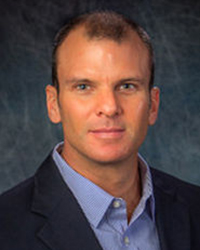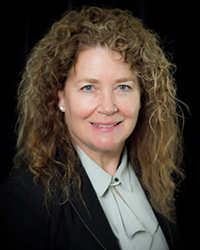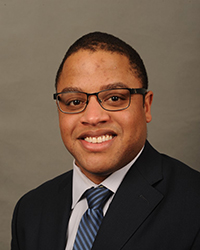

CITATIONS EDITORIAL BOARD
Managing Editor
Wendy C. Lascher
Assistant Editor
Cari Ann Potts
Assistant Editor
Heather Deffense
Publisher, CEO
Steve Henderson
Creative
J.P. McWaters
Alice Arnold
Rachel Coleman
Jonathan Gunderson
Karen B. Darnall
Rachael J.Kimball
Panda L. Kroll
Carol Mack
Michael L. McQueen
Rabiah A. Rahman
Lauren E. Sims
Michael R. Sment
Kathleen J. Smith
Al Vargas
CITATIONS is published monthly by the Ventura County Bar Association. Editorial content and policy are solely the responsibility of the Ventura County Bar Association.
Submit all editorial matters to:
CITATIONS
1050 S. Kimball
Ventura, CA 93004
t: 805.659.6800
f: 805.659.6818
wlascher@fcoplaw.com
| ERIK B. FEINGOLD | AUTOMATION IS A GOOD THING, RIGHT? | |
| KATHLEEN J. SMITH | LETTER TO THE EDITOR | |
| MARK E. HANCOCK | THE KING AND QUEEN OF MALIBU | |
| MICHAEL MCQUEEN | WHAT A LONG STRANGE TRIP IT’S BEEN – SUMMER OF ‘67 | |
| ALFRED VARGAS | FROM OXNARD INTERN TO SCOTUS LAW CLERK | |
| STEVE HENDERSON | EXEC’S DOT…DOT…DOT… |
PRESIDENT’S MESSAGE
by Erik Feingold
Automation is a good thing, right? We can check out of the supermarket more quickly by self-scanning and paying for our items with debit cards, deposit money by taking a picture of a check and scanning it to the bank, and fill up our cars at the gas station without ever having to leave the pump. The amount of pervasive automation of these common tasks has gotten to the point that, on the rare occasion when I have to actually interact with a human to perform any of these tasks, I find it to be a waste of time, especially if it involves waiting in a line.
I always considered our craft of lawyering as automation-proof for the most part. Sure, there are document preparation businesses and websites where you can download legal forms. But I don’t consider that to be true lawyering in the sense of what most of us do as professionals on a day-to-day basis: communicating with and being responsive to clients; crafting creative legal arguments while complying with the law; and interacting as a professional with opposing lawyers, judges, court personnel, experts, vendors and the countless other individuals and businesses we interact with daily to do our jobs. When I started looking into it further, I was surprised to learn how naïve I was about the vast legal marketplace for automated services.
For instance, there’s “Ross,” a robotic attorney powered by IBM’s Watson artificial intelligence. Ross is an “artificially intelligent researcher” which scours the entire Internet, including every case, article, legal opinion, minute order and court docket published in the history of the world in a matter of seconds based on natural language legal research questions. (See www.rossintelligence.com.) Ross replaces legal research subscription services and is being used by powerhouse law firms such as Latham Watkins, Sidley, Sedgwick, Bryan Cave, and Fennemore Craig, according to Ross’s website.
There’s also Lex Machina, which offers a service called “moneyball lawyering.” You plug in your venue, case facts and legal arguments, and the software predicts which particular judges statistically favor plaintiffs versus defendants, the legal theories and strategies of winning lawyers in front of those judges, the most convincing arguments and a likely outcome. Armed with this information, companies such as Legalist, a Silicon Valley startup, provide “commercial litigation financing” to fund fees and costs for commercial litigation, soup to nuts, in exchange for a piece of the action.
I could go on. There are countless additional automated legal services such as those which fight parking tickets and unlawful detainers with canned briefs based on information you plug into an app on your smartphone in a matter of seconds, at very little cost.
Should we as lawyers be worried that we’re all going to get sent out to pasture in our lifetimes to make room for computers being developed for the purpose of doing our jobs? I don’t think so. Technology is great, and I’m all in favor of automation, especially when it saves my clients money and helps them get through their legal dispute more expediently.
But the essence of lawyering is respect for, and compliance with, the rule of law. Respecting the rule of law requires appreciating the dignity of citizens, having empathy for human nature, having a healthy curiosity for the law and understanding its ongoing evolution and role in the course of human nature and society. Only lawyers who happen to be living, breathing human beings can perform those tasks in order to help people. No matter how sophisticated a computer algorithm becomes, it will never be able to replace these vital skillsets each of us need to do our jobs as professionals and as officers of the court.
Erik B. Feingold is a litigator with Myers, Widders, Gibson, Jones & Feingold in Ventura.
LETTER TO THE EDITOR
by Kathleen J. Smith
In “A View from the Watershed,” Jay C. Smith (no relation) recounts his nitpicky concerns about complications arising when an Ohio person submits a declaration under penalty of perjury for a California family law case. Smith complains that one element of perjury occurs in Ohio (the falsehood), but the other occurs in California (the materiality to the proceedings). Smith may be right, or he may be splitting hairs.
Smith describes his philosophy thusly: “accurate [is] the deadly enemy of simple and clear.” (Emphasis added.)
With this opinion, Smith differs fundamentally with Albert Einstein and probably loses in that comparison. Einstein’s philosophy was, “If you can’t explain it simply, you don’t understand it well enough.” Although if Smith fact checks this letter to the editor, he will find that snopes.com insists Einstein’s only actual relevant quote on this topic was, “It should be possible to explain the laws of physics to a barmaid.”
I have a master of mixology degree from Harvard and earned money bartending before attending Georgetown Law School. So, as a former barmaid, I feel qualified to quibble with Jay C. Smith on whether “accurate is the deadly enemy of simple and clear.” I more agree with Mark Twain, who definitely said, “I didn’t have time to write a short letter, so I wrote a long one instead.”
Kathleen J. Smith is a member of CITATIONS editorial board.
A U.S. MAGISTRATE JUDGE IN SANTA BARBARA?
by Alexander Farrell
Many members of the local bar are unaware that there is a sitting federal magistrate judge in Santa Barbara. Since Jan. 10, 2014, the position has been filled by the Honorable Louise A. LaMothe. Judge LaMothe succeeded Judge Rita C. Federman as the sole magistrate judge in Santa Barbara. Judge LaMothe conducts her hearings in Courtroom 202 of the United States Bankruptcy Court (on State Street) and maintains her chambers there.
According to the Federal Judiciary’s annual business report through Sept. 2016, the United States Judicial Conference authorized 33 part-time magistrate judge positions nationwide. Although this is a small percentage of the entire federal judiciary, part-time magistrate judges used to be very common. Since 1793, judicial officers, formerly called “Commissioners,” have served the federal judiciary in a wide range of duties. These part-time, court-appointed officers were compensated on a fee system based on their work. Over time, the Commissioners’ duties expanded to assisting judges in issuing warrants and conducting hearings in criminal and civil actions. (82 Stat. 1107.) Finally, in 1968, Congress passed the Federal Magistrate Act, which formally established a “Magistrate” position under the direction of the District Court Judge. (28 U.S.C. § 636 (c)(1).)The Act created positions of full-time magistrates who serve a renewable term of eight years and part-time magistrates who serve a renewable term of four years. Since the 1970s, the position’s title has been “Magistrate Judge.”
Judge LaMothe presides over petty offense and misdemeanor trials for defendants accused of committing crimes on federal property in the northern part of the district. Those areas include Los Padres National Forest, Naval Bases Ventura County (Point Mugu and Port Hueneme), the Channel Islands and Vandenberg Air Force Base. She is also responsible for reviewing applications for search warrants, arrest warrants and criminal complaints in felony cases, and handles habeas corpus petitions by state prisoners seeking relief from their convictions. Of greater interest to civil practitioners, Judge LaMothe serves as a settlement judge in cases before the district court, particularly when the lawyers and the parties are located in the district’s northern counties (Ventura, Santa Barbara and San Luis Obispo). Since her appointment to the bench, Judge LaMothe has served as a settlement judge in a wide variety of cases, including many types of commercial litigation and civil rights cases. If you’re interested in having Judge LaMothe serve as a settlement judge in a case pending in the district court, contact her chambers to speak with her staff about her availability. Judge LaMothe’s courtroom deputy clerk, Debbie Fischer, may be contacted at
(213) 894-3787.
Magistrate judges routinely act as settlement judges in federal cases. They can be very helpful in helping you reach a resolution in your case. They are widely recognized as fair and neutral and their status as judges can sometimes serve to convince reluctant parties that they should settle their cases. And, unlike private mediators, the services of magistrate judges are free. In 2016, the Federal Judiciary also reported that U.S. magistrate judges conducted 22,157 settlement conferences across the United States.
Before becoming a magistrate judge, Judge LaMothe was a full-time mediator and arbitrator on the Central Coast, serving on panels of the American Arbitration Association, and a Fellow of both the College of Commercial Arbitrators and the Chartered Institute of Arbitrators. She also served as a mediator and long-time volunteer on the U.S. District Court’s Attorney Settlement Officer Panel. Earlier, while in private practice as a litigator, Judge LaMothe served twice as a Ninth Circuit Judicial Conference lawyer representative and was Chair of the American Bar Association’s Section of Litigation. Judge LaMothe began her legal career at Irell & Manella, LLP, in Los Angeles, California, in 1974, where she became the firm’s first woman partner. She later practiced at Riordan & McKinzie and Bird Marella Boxer Wolpert & Matz, before moving to Santa Barbara and becoming a full-time neutral. Because Judge LaMothe’s judicial position is part-time, she continues to work as a private arbitrator and mediator in cases not pending before the district court. For more information on Judge LaMothe’s experience and private practice, see
www.dispute-solutions.com.
Off the bench, Judge LaMothe loves to cook, garden, travel and read. Her husband, David Kaplan, is a retired professor of economics at Santa Monica College. Their son, Daniel, is a graduate student at USC’s Marshall School and an operations and business consultant for home-care agencies
Alexander Farrell is a third-year student at Notre Dame Law School. He is spending this summer as a judicial intern for the United States District Court for the Central District of California. He can be reached at afarrel2@nd.edu.
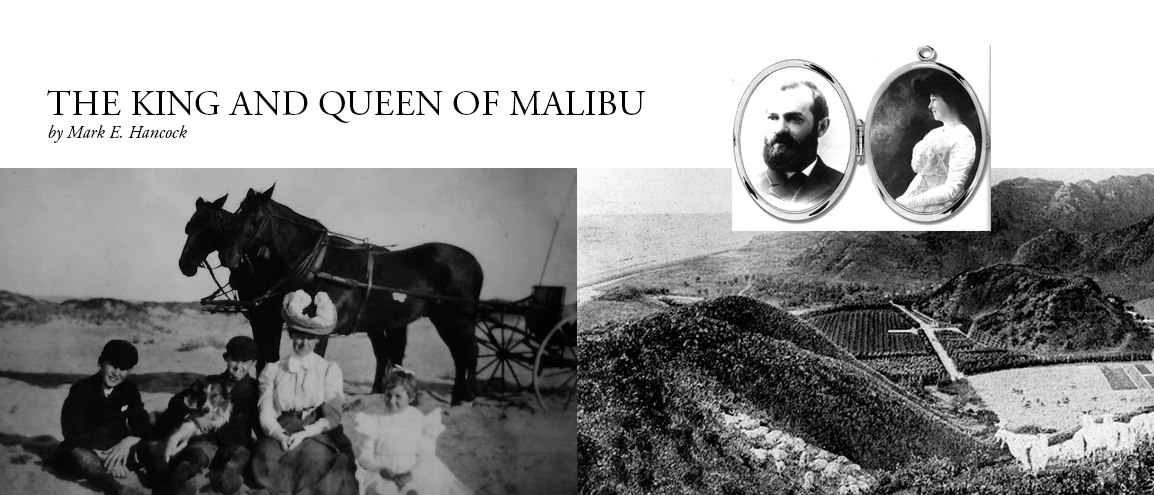
Malibu today is still pretty, but there is no doubt, especially on a weekend or holiday, that its beaches get crowded, which detracts from its beauty. In many parts of Malibu, the houses are jammed right next to each other, so you can’t even see the ocean. It is hard to believe that this stretch of coastline was once uncrowded and owned by one family, but it is not hard to understand why they fought to preserve it. The King and Queen of Malibu by David K. Randall recounts the history of this family and the land they once owned.
Frederick Hastings Rindge, from a wealthy Massachusetts family, and his wife came to Los Angeles in 1877. At the time, Los Angeles was still a backwater, beset with floods, drought and insects, and with a high murder rate to boot. Mr. Rindge set out to make his mark, building a brick commercial building in downtown and buying or starting new businesses in Los Angeles and San Francisco. Over time, he started, had a stake in or sat on the board of companies such as the Conservative Life Insurance Company, Edison Electric and Union Oil. He built a mansion for his family on Harvard Boulevard in the West Adams District, which, for a time, was considered one of the best neighborhoods in Los Angeles, home to notables like Edward Doheny, Fatty Arbuckle, Buster Keaton, Wyatt Earp and W.C. Fields.
Looking for a place to escape the city, Mr. Rindge purchased Rancho Topanga Malibu Sequit in 1892. The Chumash Indians, who had lived in this area, had called it Maliwu. Rindge purchased the Rancho, totaling 13,315.7 acres (half the size of Manhattan), for ten dollars an acre from one Henry Keller. Keller’s father, Matthew, a grocer and winemaker in Los Angeles, had purchased it for ten cents an acre in 1857. (One can still see the ruins of Keller’s home in Solstice Canyon on a great hike which ends at the ruins of another home and a waterfall.) Rindge and his family built a mansion on the edge of Malibu Creek, completed in 1893. They would travel to and from it along the beach, which was passable at low tide. At the Rancho, they would track deer, watch passing whales and camp on the beach with the children. Rindge described this paradise in his book Happy Days in Southern California.
Randall’s history details the Rindge family’s battles, legal and otherwise, to hang on to their paradise. One of the problems was with homesteaders, such as Marion Decker (from the family after which Decker Canyon Road is named). Homesteaders had staked out claims in the canyons abutting the Rancho and would cross Rindge’s property to use the beach as a way of making the trip into Los Angeles easier and shorter.
Early on, Rindge didn’t have a problem with the homesteaders. In fact, he used their labor to improve a wagon trail up from Los Angeles. The trouble started when the number of homesteaders and tourists traveling up from Los Angeles increased.
Mr. Rindge built gates at Las Flores Canyon and Point Dume. He gave some homesteaders keys but told them they had better not lose them. That provoked some of the homesteaders, Decker included, and prompted a hearing before the L.A. County Board of Supervisors in 1895. Rindge settled that matter by paying the legal fees of the complaining homesteaders and offering to unlock the gates if those homesteaders would re-latch them after they had passed. In the meanwhile, Rindge tried to buy out as many of the homesteaders as possible. Though many sold, Decker declined the offer. Things quieted down for a while, though the Rindge mansion in Malibu burned down in 1903 in suspicious circumstances. Interestingly, Decker’s house was spared.
Frederick Rindge died in 1905, leaving his wife, May, and family an estate worth roughly 700 million in today’s dollars. In the course of Frederick’s time in Los Angeles, the city grew by leaps and bounds. Spots in the Santa Monica Mountains were the last pieces of unclaimed real estate around. People who saw Malibu as a place for suburban homes, as well as the homesteaders, didn’t like May, excoriating her in newspapers. Her ranch foreman had to repair or replace the gates there at least once a month. May tried hard to hang onto her property. To forestall the Southern Pacific and other railroads from trying to build a line across the Malibu Rancho, she built her own railroad, though it didn’t really go anywhere. Her attorneys unsuccessfully petitioned the President to make the land behind the Rancho a national preserve. She hired additional guards and gave them each a shotgun.
Two legal cases arose in 1907. May was represented by Henry O’Melveny in these matters, which took years and hundreds of depositions to resolve. The first case involved trespassing charges against a motorist allegedly seeking to travel to unclaimed lots in the mountains. In the other case, an U.S. Attorney filed federal charges against May Rindge, claiming that the road along the coast and nine paths homesteaders had created were unrestricted roads and that she was illegally blocking them. An injunction in this federal case allowed the homesteaders free access pending trial. After trial, however, the court decided that the coast route was a public highway but that the government had failed to prove its case as to the paths, so that May was free to close them. She had her workers blast the paths with dynamite. She built a private road higher up the bluffs and abandoned the old wagon way to the elements, which subsequently rendered it impassable. She charged O’Melveny with suing anyone who slighted her. In 1917, the California Supreme Court proceeded to hold that all the roads in Malibu were the private property of the Rindge family. It appeared she had won.
Ultimately, however, property and income taxes, the automobile and the stock market crash of 1929 undid May Rindge’s goal of holding onto the Malibu Rancho. The L.A County Assessor increased the valuation of the property, and ratification of the Sixteenth Amendment in 1913 ushered in the federal personal income tax. This increased the carrying cost of the Rancho, while siphoning off income necessary to support it.
In the Spring of 1918, the County of Los Angeles began eminent domain proceedings to build roads across the Rancho. This provoked another legal fight, which went all the way to the U.S Supreme Court. Unfortunately for May Rindge, the court decided that property may be taken for “public use” even though it may not be strictly necessary, where the taking adds to health, recreation and collective enjoyment. Even if the roads did not connect to roads further north, they would constitute scenic highways of great beauty for motorists. This same principle supported building roads in the national parks.
May Rindge managed to hold on to the Rancho for another decade, through such enterprises as leasing the lots of the Malibu Movie Colony and Malibu Potteries, which produced beautiful tiles purchased and used by William Wrigley in structures on Catalina Island. However, she made the mistake of building mansions for herself and her daughter on the Rancho, financing them with bonds secured by the land.
The 1929 stock market crash took away her income, and the Malibu land was turned over to the bondholders. May became ill and died in 1941 after living for years as a virtual recluse in her West Adams home, unable to go out because of warrants to appear in court proceedings. Rhoda Adamson, one of her children, who married the founder of Adohr dairy (Adohr is Rhoda spelled backwards), retained some lands in Malibu, and the Adamson home is now a museum in the care of the California Park System.
Malibu is a special place. Newer owners of Malibu property are still trying to keep others away from it. It is ironic that Rindge himself, in promoting and building up Southern California, helped bring in the hordes of people that he and his widow then had to struggle to keep away from their land. The tale of the Rindges poses some interesting philosophical questions. For starters, can you ever really own paradise, or can you only mess it up?
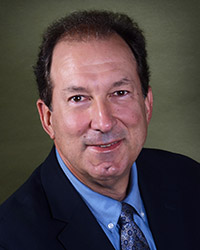
Mark E. Hancock is an attorney with offices in Ventura. He handles real estate, insurance and personal injury cases. His can be reached at hancocklaw@aol.com

There is probably little as dangerous as bored teenagers in their last semester of high school. That is where I found myself in 1967, when my Simi Valley High School friends and I conspired to inform our parents that we wanted to hitchhike to San Francisco. We would stay with the aunt of each of our friends, problem being that none of us actually had an aunt living in San Francisco. We were going on an adventure without a safety net. Our parents were not totally naive and insisted that once we reached the City by the Bay, the first thing we were to do was purchase a bus ticket home. So we promised, packed up a bedroll of sorts and had a friend drop us off at the freeway entrance at Moorpark Rd and 101 in Thousand Oaks. We were quite excited. But our youthful enthusiasm lulled as we gradually realized that hitchhiking was a most ponderous and unpredictable form of transit. We had planned to stay a week. It looked like it might take a week just to get there.
By that time in my high school career, I had accomplished all my freshman dreams and ambitions except perhaps grades. I had been a varsity football star, had the head song leader as a girlfriend, was president of the Student Government, belonged to the self-prestigious social club, the varsity club and wandered around in a daze as a BMOC. My brother and sister told me later that it was disgusting, and to be truthful, it was wearing thin. It was about this time that transistor radios were playing “San Francisco (Be Sure to Wear Flowers in Your Hair).” It seemed like a good idea at the time, so my two friends and I, along with about 100,000 other bored youth, set our sights on Baghdad by the Bay.
We eventually got our first ride, which we accepted with some trepidation. There was that important first split-second assessment as we ducked our heads into a stranger’s car trying to decide if we’d get back out alive. We got stuck again at that infamous hitchhiking corner, the horse latitudes of pre-freeway State St. and 101, with 25 other hopeful urban refugees. We eventually worked our way up to Big Sur and entered an alternative universe of huge redwoods, mysterious canyons, streams, fern dales populated by a large number of youth with a very loose grasp of reality. After a terrifying ride with someone who really wasn’t driving – more like dreaming down twisty roads next to vertical cliffs, we came to a rumored social gathering. I believe that was my first love-in, at least what I can remember of it. The next morning, I awoke in a mist-filled redwood meadow where people had just dropped as if a hand grenade had gone off. People did not party like that in Simi Valley.
We headed back to the road and were picked up by two guys in a convertible MG. It looked impossible, but we were game. We climbed on the back trunk, placed our feet in the boot and held on to the roll bar for dear life as the MG barreled towards Monterey. I can still remember the painful stings of mist hitting eyes and hands. These gentlemen were friendly and fascinated about our misguided adventure. When they learned we actually had no place to stay, they were incredulous and offered their apartment on one condition – we had to catch their parakeet, which was flying around the apartment as we spoke. Having no other options and feeling up to out-smarting a parakeet, we gratefully agreed. They scribbled out a note to a friend who worked at the YWCA to give us the apartment key.
We worked our way into the city and then had to walk. Hitchhiking there is not as efficacious as long distance. When we finally found the YWCA in the late afternoon – with not a little difficulty, as we had no cell phones, Google or GPS – the friend was not working but would be back in the morning. So for plan B – off to the bus station to buy those return tickets. With no money and no aunts, we settled onto the most uncomfortable bus benches imaginable before modern economy airlines.
Every so often, the bus station security would amble around and ask what we were up to. “Waiting for the bus,” we reported amiably. After about four hours, their suspicions aroused, they actually wanted to see those tickets. When they read that our tickets were for a week from that day, out we went.
We walked to Haight Ashbury, as we had heard that there were crash pads where the Diggers would give you a bed and food. While trudging through the Haight at two in the morning, a taxi pulled up to the curb, and out came a couple of the largest women I’ve ever seen, one of them black and dressed in an almost neon blue sequined dress and a remarkably low baritone voice. We were standing there speechless when a police cruiser drove up. The officer asked the ages of my traveling companions, who were eighteen years old. When he asked me I truthfully told him I was seventeen. We were then directed to get in the car; we were going to the station. We were surprised and outraged – what for? We did nothing wrong. The officer advised that my friends were being arrested for contributing to the delinquency of a minor (me), and I was being arrested for a curfew violation. My friends glowered at my stupidity for being seventeen.
We had heard rumors about the Golden Gate Park Police. At the station, they did the worse thing they could have done: they called our parents. It was three a.m. and we had nowhere to go. Apparently the desk sergeant did not want to put us in jail. We had short hair and looked clean cut; we did not fit the style of the infamous “dirty hippies.” The officers tried doors to several offices to to find us a place to sleep, and I will never forget watching three police officers trying to jimmy open a locked office door to find us accommodations. With considerable exasperation, the desk sergeant then said we could sleep in the back of his station wagon, but if we were not gone by the time he was off duty we were going to prison. We crawled into the station wagon. I did not sleep much since I was terrified we would oversleep and end up in prison.
As the sun rose, we went looking for a bus stop. We could hardly decipher the obtuse bus schedule on the utility pole. None of us had ever used public transportation except for the Simi Valley school bus. I was sleepy and cold, so I lay down on the sidewalk and curled up in a ball remembering Twain’s observation that the coldest winter he had ever experienced was a summer in San Francisco.
I woke with the clanking sound of a street car approaching. The cities’ maids, on their morning pilgrimages to work, were standing around me waiting for the bus. We found the YWCA and the woman, who accepted our note to our relieved amazement, and gave us a key and directions to the apartment. It was an older Victorian with ornate and unfortunately very high ceilings and long draperies over which the blue and white parakeet was flitting about in seeming arrogance and spite. So high were the ceilings that we could not get near the damn bird, not even close. Faced with such a daunting task, we thought we should go see some of the city.
The Haight Ashbury district was mobbed with thousands of youth dressed in blue chambray work shirts, tie dye t-shirts and bell bottom jeans, an army with its own uniform. For a group of non-conformist, free spirited anarchists, they all sure looked the same. The smell of patchouli oil and marijuana permeated the air. People flashed the peace sign with such overwhelming regularity that I started thinking about socking someone.
The most remarkable experience of the trip was the soundtrack. The Haight was home to Janis Joplin, the Grateful Dead, County Joe McDonald and Jefferson Airplane. With our low-fidelity transistor radio, we first heard the wails of White Rabbit, Country Joe’s anti-war chant, and a dozen other fabulous songs that defined the atmosphere; songs that we had never heard in Simi Valley. It seemed we had entered another universe.
Not having any money and taking a hint from the crowd, we tried panhandling. I would look at a likely victim and say “Peace (with the requisite sign), love. Brown rice. You got any spare change?” It was surprisingly effective. After a while, tired of the slow-motion riot of the Haight, we decided to see other parts of the city. We made it across the Presidio, over the Golden Gate Bridge and hung out on the docks of Sausalito just under the Golden Gate Bridge. On a beautiful sunny day on the Bay I sat on a dock listening to Otis Redding singing “Sittin on a dock in the Bay.” It does not get much better than that.
Back in Golden Gate Park, there were spontaneous love-ins, people dancing, women twirling with abandon, clouds of marijuana smoke, drums everywhere and this sense that you could do anything you wanted. The women were amazingly affectionate and all dressed like gypsies. Only months before, I was a high school football player with an uptight cheerleader girlfriend. This phenomenal anti-establishment, spontaneous revolution really felt right for the times.
It also planted the seeds of a lifelong anti-authoritarian streak; pronounced distrust of the powers that be. This happened to a lot of us forced to watch “Reefer Madness” in health class. We gradually discovered that government propaganda was nonsense. If they lied about marijuana, what else? Vietnam?
Walking back to the apartment, we stopped at a donut shop. A man turned to look at us. When he looked at me, he just lit up, as if he seeing a vision. I realized that the vision was me. My first experiences with what has become a feminist rant, the disconcerting focus of the male gaze – or in this instance “gayze.” My friends were oblivious. “Eat your damn donuts and let’s get out of here,” I growled. Back then, particularly in Simi Valley, there were no gays, at least none I knew, and a nebulous anxiety back then that you could be turned gay. San Francisco was eye-opening in every aspect.
The great music continued until the disco craze. The growing availability of birth control pills changed the behavior and the attitude of women in ways that were both welcome and culturally disruptive. The sense of unbounded freedom gave no hint to the impending regulatory state we now endure. The historian Barbara Tuckman noted in the history of the fourteenth century, “A Distant Mirror,” that Europe had experienced similar periodic “love-ins.” At the time, we had no inkling that the free love movement would devolve into a new Victorian age of prudish righteousness Back at the apartment, a well-aimed pillow knocked the parakeet from its perch. We deposited it in its cage, then caught the bus and headed back to Simi Valley and the future. A little over ten years later, I returned to San Francisco in a private corporate jet and managed a multimillion-dollar lawsuit.
Clearly, it has been a long strange trip. Except that (as pointed out by my diligent editors), Otis Redding was writing the song in Sausalito in August 1967 and did not record it until November 1967. It was a magical time, but as they say: if you remember the Sixties, you weren’t actually there.
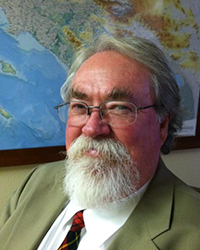
Camarillo attorney Michael McQueen handles complex civil and trust litigation, natural resource and energy law and business law. He is a member of CITATIONS editorial board.
FROM OXNARD INTERN TO SCOTUS LAW CLERK
by Alfred Vargas
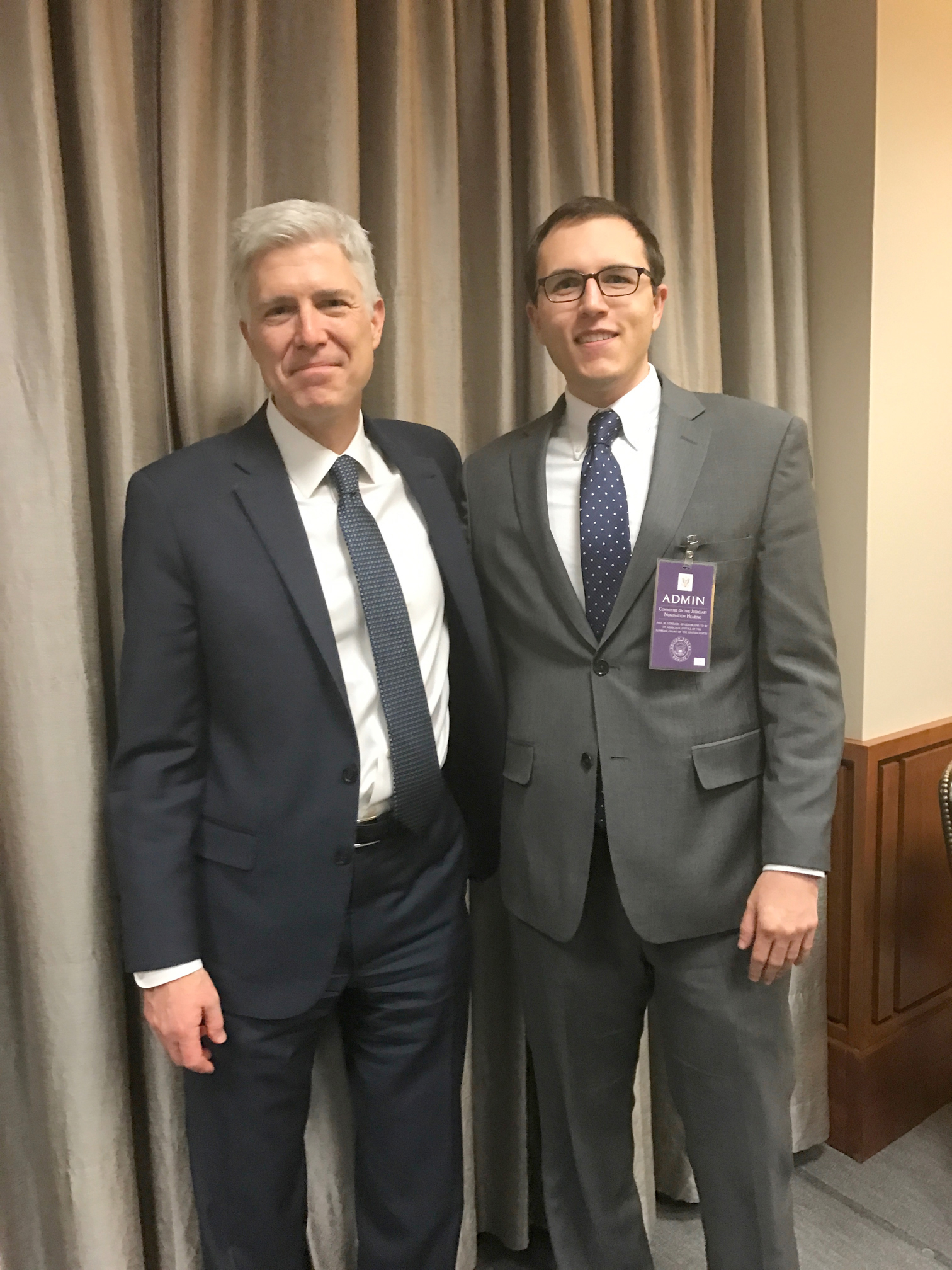 In 2010, David Feder held his first legal clerkship with the local legal aid office of California Rural Legal Assistance, Inc. (CRLA). As of July 18, David officially started a clerkship with the Hon. Justice Neil Gorsuch at the U.S. Supreme Court.
In 2010, David Feder held his first legal clerkship with the local legal aid office of California Rural Legal Assistance, Inc. (CRLA). As of July 18, David officially started a clerkship with the Hon. Justice Neil Gorsuch at the U.S. Supreme Court.
David’s parents, local attorneys Steve and Catherine Feder, met at the University of San Diego School of Law. They encouraged David to focus on his studies. After graduating from Cal Poly San Luis Obispo, David received his admittance letter from Harvard. David made the Harvard Law Review and graduated summa cum laude.
After graduation, David clerked for Judge Gorsuch for a year. He says that the highlight of his clerkship was probably the opportunity to spend time over the Thanksgiving holiday with Judge Gorsuch and his family at their home in Boulder, Colorado. After his clerkship, he started work at the firm of Munger, Tolles & Olson in Los Angeles while also working as an Olin-Searle Fellow from Harvard.
While at Munger, David attempted to give back to the community by taking on pro bono matters. One such matter was an asylum appeal to the Tenth Circuit Court of Appeals. Judge Gorsuch naturally recused himself.
In January of 2017, then-Judge Gorsuch invited David as one his guests to appear at President Trump’s press conference announcing the nomination. David never returned home from Washington, D.C. He left behind his beloved pound-rescue dog Leo with his maternal grandmother, Vera Ramirez, who has since claimed him as her own. Over the next several months, David worked as an attorney in support of the efforts to confirm Justice Gorsuch.
After the Senate confirmed Justice Gorsuch, David officially assumed the title of SCOTUS law clerk for the Oct. 2017 term.
To date, David is the only Ventura County-born resident to clerk for a Supreme Court Justice. He credits his time with CRLA in Oxnard as an essential part of his education. Quite an accomplishment for someone admitted to the California bar on New Year’s Eve, 2014.
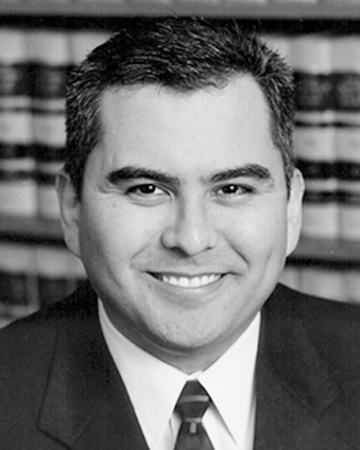
Alfred Vargas is a Ventura attorney who handles a variety of matters, including landlord-tenant, criminal, and family law. He is a member of the CITATIONS editorial board. You can reach him at 415-7837.
Exec’s Dot…Dot…Dot…
by Steve Henderson, M.A., CAEs
 HELP WANTED: Beach/Cowdrey/Jenkins, LLP, seeks an experienced litigation attorney with a focus on defending healthcare and human services providers. Applicants must have case-handling experience from start to finish, substantial experience taking and defending depositions, handling document-intensive discovery, dispositive motions and trial preparation. Email resume/writing sample to Wendy@beachcowdrey.com… A Boies Schiller lawyer has won the
HELP WANTED: Beach/Cowdrey/Jenkins, LLP, seeks an experienced litigation attorney with a focus on defending healthcare and human services providers. Applicants must have case-handling experience from start to finish, substantial experience taking and defending depositions, handling document-intensive discovery, dispositive motions and trial preparation. Email resume/writing sample to Wendy@beachcowdrey.com… A Boies Schiller lawyer has won the  7th Annual Harper Lee Prize for Legal Fiction. James Grippando won the award for his book Gone Again, the 12th in the Jack Swyteck series, about the adventures of a Miami criminal defense attorney. The novel opens with Swyteck being approached to help stop the execution of a convicted murderer – by the mother of the purported victim, who believes her daughter may still be alive…
7th Annual Harper Lee Prize for Legal Fiction. James Grippando won the award for his book Gone Again, the 12th in the Jack Swyteck series, about the adventures of a Miami criminal defense attorney. The novel opens with Swyteck being approached to help stop the execution of a convicted murderer – by the mother of the purported victim, who believes her daughter may still be alive…

Amy and Noel Kiesewetter are so pleased to announce the arrival of Josephine “Josie” Monica. They got the call on July 5 that she was here and her birth mother had chosen them as her parents. On a red-eye that same evening to Wichita, Kansas, to pick her up…
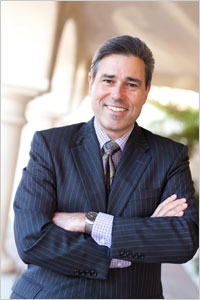 John Anderson, a partner with FCOP, has been appointed to the executive committee of the Trusts and Estates Section of the State Bar of California, commonly referred to as TEXCOM. Anderson is a Certified Specialist in Estate Planning, Trust and Probate Law. His appointment to the committee will take effect in September and will run through 2020…
John Anderson, a partner with FCOP, has been appointed to the executive committee of the Trusts and Estates Section of the State Bar of California, commonly referred to as TEXCOM. Anderson is a Certified Specialist in Estate Planning, Trust and Probate Law. His appointment to the committee will take effect in September and will run through 2020…
A lawyer in Irondale, Alabama, has been reprimanded in connection with his 2014 lawsuit contending that his client’s penis was partly amputated when he went to the hospital for a routine circumcision. A disciplinary notice says the lawyer, John Patrick Graves, filed the medical malpractice lawsuit against three doctors without reviewing medical records to determine whether the claim was viable. It is believed Graves knew or should have known the meritless claims in his widely circulated complaint “served no purpose other than to harass or maliciously injure one or more of the defendants.”…
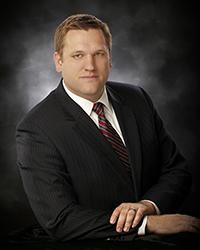 Beach/Cowdrey/Jenkins Part Two: They have added Spencer Jenkins as a named partner, and the firm’s new address is 520 N. Ventu Park Road, Suite 333, Newbury Park, 91320…
Beach/Cowdrey/Jenkins Part Two: They have added Spencer Jenkins as a named partner, and the firm’s new address is 520 N. Ventu Park Road, Suite 333, Newbury Park, 91320…
An unusual event is taking place 5:30 p.m., Aug. 10, at Social Tap, located in Ventura’s Pierpont neighborhood. The Ventura County Criminal Defense Bar Association and the Black Lawyers of Ventura County present “Decriminalizing Poverty – Effecting Change In Your Community Through Advocacy and Impact Litigation.” The speaker is Thomas Harvey, the Co-Founder and Executive Director of ArchCity Defenders, a non-profit civil rights law firm providing holistic legal advocacy to the poor and homeless in the St. Louis region and beyond. See flyer contained in this issue of CITATIONS…
An Oklahoma man is facing a felony charge after allegedly phoning in a bomb threat to the Muskogee Police Department from a pay phone inside the station’s lobby. They still have pay phones?…
The Dion Law Group is seeking a full-time Office Assistant. Quality venue for someone to hang their hat. Serena at (805) 497-7474… On June 20, a judge approved a Texas man’s request to change his name from Ernest Baeza Acosta to Ernesto 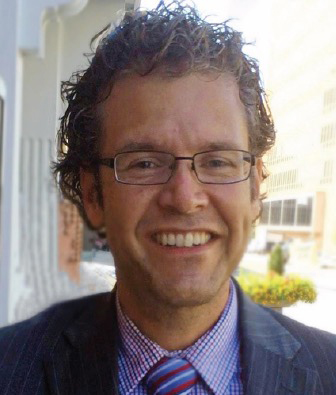 Trump. Check out this clown at the smoking gun… MARK YOUR CALENDARS – The Barristers are hosting their annual Wine and Cheese event Aug. 17, at 5:30 in the outside courtyard of FCOP. NO CLE, just fun with help from Anacapa Brewing Company. The Women Lawyers of Ventura County is featuring Congresswoman Julia Brownlee at noon on Friday, Aug. 11, at Sterling Hills CC. www.wlvc.org/calendar or the flyer inside this issue.
Trump. Check out this clown at the smoking gun… MARK YOUR CALENDARS – The Barristers are hosting their annual Wine and Cheese event Aug. 17, at 5:30 in the outside courtyard of FCOP. NO CLE, just fun with help from Anacapa Brewing Company. The Women Lawyers of Ventura County is featuring Congresswoman Julia Brownlee at noon on Friday, Aug. 11, at Sterling Hills CC. www.wlvc.org/calendar or the flyer inside this issue.
The Southern California Institute of Law is soliciting an instructor to teach a basic Credit/No-Credit Legal Research class for 10 weeks, just one night per week beginning August 21. Apply to stanpulle@yahoo.com.
Steve Henderson has been the executive director and chief executive officer of the bar association and it’s affiliated organizations since November 1990. He is chagrined that OJ Simpson will be released into society. Additionally, his beloved Dodgers are looking unbeatable this season and headed to a World Series. Lastly, he beat Michael Phelps and the shark in a race July 23. Henderson may be reached at steve@vcba.org, FB, LinkedIn, Twitter at stevehendo1, Instagram at steve_hendo, or better yet, 650-7599.
Member Benefits
Mebership Log-in
Lawyer Referral Service
Member Benefits
Mebership Log-in
Lawyer Referral Service
Member Benefits
Mebership Log-in
Lawyer Referral Service
Member Benefits
Mebership Log-in
Lawyer Referral Service
